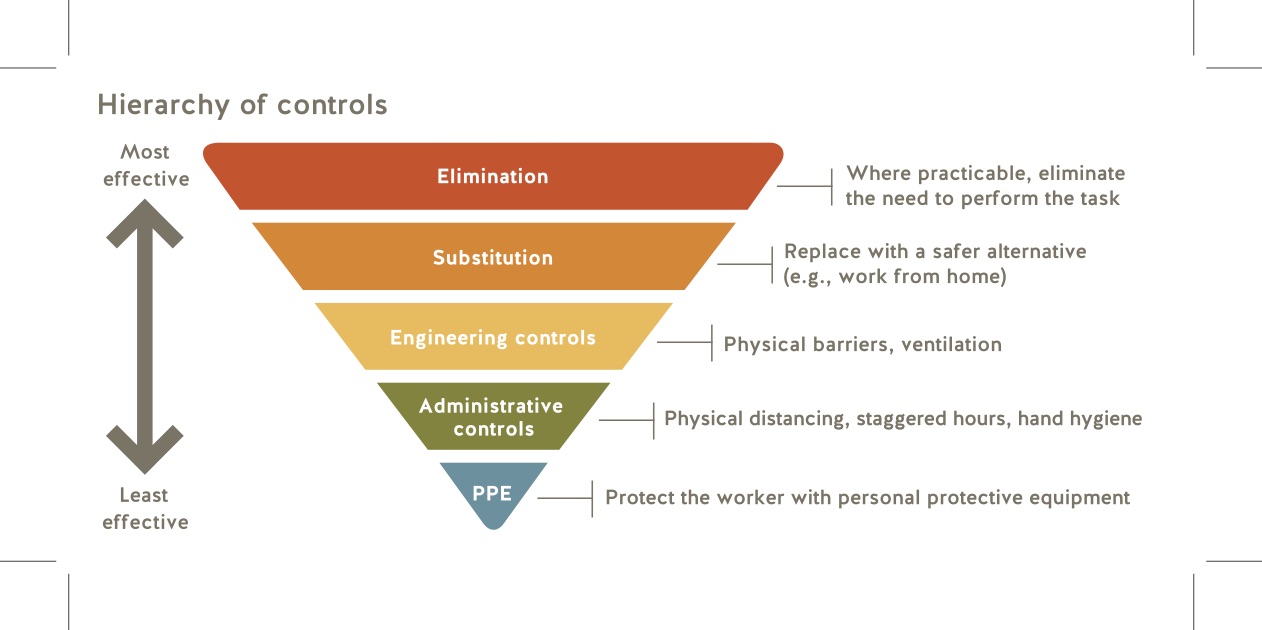
Industry News
News
Health and Safety
Sawmilling
Protecting workers during a pandemic
Best practices for forestry employers to follow during COVID-19
August 12, 2020 By Megan Martin
 Megan Martin.
Megan Martin. As a forestry employer or sub-contractor, you are responsible for the health and safety of your workers. You must ensure policies and procedures are in place to keep your workers healthy and safe. This includes providing workers with up-to-date instructions, training, and supervision on your policies and procedures. In the event of a pandemic such as the current COVID-19 outbreak, understanding your risks, controlling exposure and having a contingency plan in place are key to ensuring the continuation of essential business activities with as little disruption as possible.
Controlling the risk of COVID-19 exposure
It is up to employers to ensure that all necessary precautions are taken to minimize the risk of COVID-19 transmission to themselves, workers, and others in the workplace. As an employer, you should update your business contingency plans with health and safety in mind, implementing the latest directions from the provincial health officer. Your new plan should include the following:
- Implement and enforce a policy requiring anyone with symptoms of COVID-19, such as a sore throat, fever, sneezing, or coughing, to self-isolate for 10 days from the onset of symptoms. Ensure your policy extends to anyone advised by public health to self-isolate, whether or not they have visible symptoms.
- Revise work schedules and reorganize tasks in order to limit contact and enable a two-metre distance between workers.
- Avoid gathering in large groups by finding alternatives to in-person meetings. Limit the number of workers using the break room and washroom locations at the same time.
- Provide adequate hand-washing facilities on site for all workers and ensure their location is visible and easily accessed. Hand sanitizing stations equipped with gels or wipes with a minimum of 60 per cent alcohol, or water jugs with soap and disposable towels, may be used where handwashing facilities are impractical.
- Provide and maintain adequate washroom facilities as required by Occupational Health and Safety Regulation 4.85. WorkSafeBC has guidance on the minimum number of required washrooms, washroom facilities where no plumbing is available, and maintenance of washroom facilities.
- Maintain a list of all employees who are currently working and update this list daily; this includes log truck drivers and all others who visit the site or work there intermittently.
- Clean all common areas and surfaces, including inside cabs of mobile equipment, tools, washrooms, light switches, and door handles, at the end of each day or when there is a change of operator.
- Workplaces that have more than nine but fewer than 20 workers need to have a worker health and safety representative, while workplaces that have 20 or more workers need a joint committee. The committee or representative should work with the employer and find solutions related to health and safety including concerns related to COVID-19.
When critical tasks require close proximity
The BC Forest Safety Council has provided a COVID-19 Field Level Risk Assessment (FLRA) to assist in the planning of controls for critical tasks that require workers to be in close proximity (within two metres).

Step 1: Elimination or substitution. Take all steps practicable to eliminate the need to perform the task.
Step 2: Engineering controls. Can you implement an engineering control to protect workers? Consider waterproof barriers placed between the workers, such as plexiglass partitions or hanging tarps.
Step 3: Administrative controls. Can you make changes to work processes?
- Pre-task health assessment – only healthy workers without COVID 19 symptoms should perform work.
- Ensure hand washing or sanitization facilities are close to the activity so that workers can wash prior to the activity.
Step 4: Personal Protective Equipment (PPE). This last form of protection should only be considered after serious consideration of the previous control measures.
Tips for workers
Workers are also responsible for keeping everyone healthy and safe. Before coming to work you should:
- Take steps to minimize exposure to COVID-19 through physical distancing and proper hygiene practices.
- Notify your manager if you have COVID-19 symptoms such as a sore throat, fever, sneezing, or coughing. Sick individuals should stay at home.
- Comply with your manager’s instructions around minimizing exposure to COVID-19.
- Wash your hands frequently and/or use hand sanitizer, and avoid touching your face.
Find out more
Find more information to help you assess and control potential hazards and create a pandemic contingency plan at bcforestsafe.org.
For resources on COVID-19 and the workplace, visit worksafebc.com and click the COVID-19 banner on our home page.
During this time, employers and workers are also expected to follow direction from public health. The BC Centre for Disease Control has collected essential information for employers and businesses on their website covid-19.bccdc.ca. Find it by clicking the “COVID-19 and the public” tab on the home page then clicking “Employers & Businesses.” The provincial health officer has also provided specific guidance to manufacturing sites operating during COVID-19 at gov.bc.ca/covid19.
Megan Martin is the manager, OHS consultation and education services – manufacturing, for WorkSafeBC.
This article was originally published in CFI‘s May/June 2020 issue.
Print this page